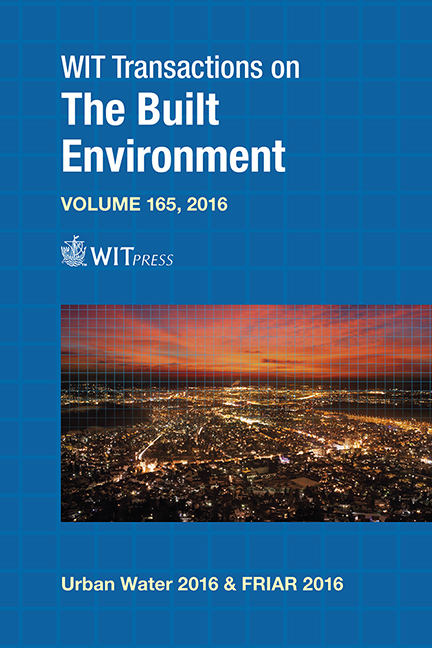Redefining The Infrastructural Response Model: Using An Informational Framework To Proactively Mitigate Large-scale Coastal Events
Price
Free (open access)
Transaction
Volume
165
Pages
12
Page Range
309 - 320
Published
2016
Size
1,818 kb
Paper DOI
10.2495/UW160271
Copyright
WIT Press
Author(s)
D. G. King, M. C. Lee
Abstract
One of the major challenges facing coastal cities is how they prepare and respond to the devastating forces of natural events. Currently, after every major disaster, professionals step forward in an attempt to solve post-disaster problems. This “Response Model” proposes solutions that are aimed at addressing large-scale regional issues by crafting a comprehensive set of solutions that are designed for a small-scale implementable area. The problem with the Response Model is that comprehensive solutions are tailored to fit a specific set of site conditions that are unique to the place addressed. This means that application of the comprehensive solution is difficult at other locations and thus does not do enough to address the large-scale regional issue it initially sought to solve. In addition, there is not a systematic mechanism to enable the research and creative ideas generated to apply to future disasters. The authors believe that the solution is not a reinvention of the Response Model, but rather an augmentation of it. Merging the creation of ideas with an informational framework would enable the Response Model to be categorized and reapplied to different locations, thus becoming a more useful tool. The authors therefore propose a “Proactive Model” that could be implemented by collecting the comprehensive solutions after each disaster response, separating each into its smaller micro-sized solution parts, then qualifying those parts based on a set of criteria. The solution parts could then effectively be recombined to form multitudes of new unique comprehensive solutions. This system would both allow a reconfiguration of solution parts to fit other unique places but also create a suppository of creative infrastructural ideas that could be utilized as an idea library for designers as well as government entities.
Keywords
critical infrastructure, information system, disaster recovery, disaster mitigation, coastal planning





